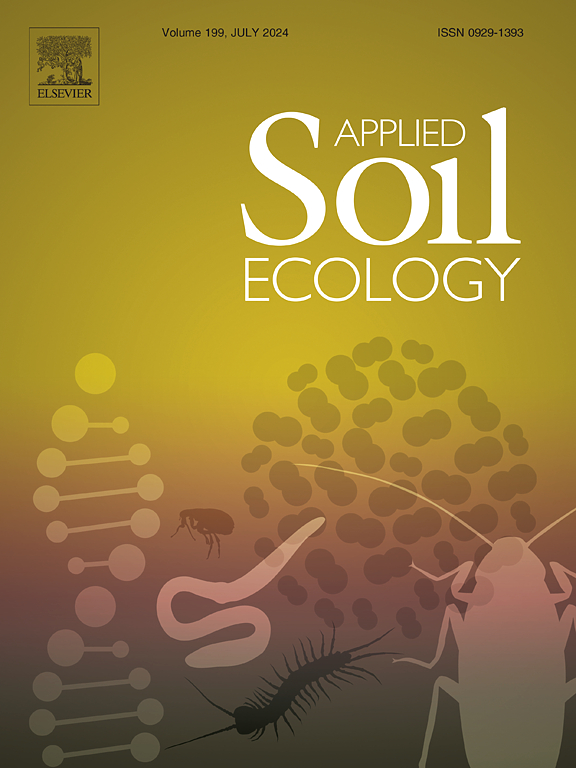Successional transition from broadleaf to bamboo forests promotes fungal communities and soil carbon mineralization following the altered litterfall quality
IF 4.8
2区 农林科学
Q1 SOIL SCIENCE
引用次数: 0
Abstract
Forest succession alters soil organic carbon (SOC) dynamics by changing litter quality of litter entering the soil and affecting microbial communities. However, few studies have explored how litter quality interacts with soil fungal communities to regulate SOC mineralization during successional changes in forest succession. We studied the relationship between litter quality, SOC mineralization, and associated fungal composition by conducting an in-situ decomposition experiment in a natural broadleaf forest and a pure Moso bamboo (Phyllostachys edulis) forest, where the succession in former forest arrested by structurally inferior bamboo grasses. On average, topsoil organic carbon mineralization increased by 73 % and subsoil by 233 % (only during autumn) following the broadleaf forest transitions to bamboo dominance. More decomposable litterfall in the bamboo forests increased the abundance of saprophytic fungi (e.g., Mortierellales and Chaetothyriales orders) and enhanced topsoil degradation functions, promoting SOC mineralization compared to the broadleaf forest. Higher water-soluble organic carbon content increased subsoil organic carbon mineralization by increasing the abundance of Mortierellales order. Our results emphasized the importance of interaction between litter quality and fungal composition (especially saprophytic fungi) regulated SOC mineralization in arrested succession. The enhanced SOC mineralization after the broadleaf forest transition to bamboo forest suggested that the traits of Moso bamboo, such as fast litterfall decomposition, can accelerate SOC mineralization to reinforce its dominance. By examining the role of microbial decomposition in regulating soil nutrient dynamics in the context of arrested succession, our study offered a unique mechanistic perspective on the belowground drivers of bamboo dominance, with important implications for forest structure and function.
求助全文
约1分钟内获得全文
求助全文
来源期刊

Applied Soil Ecology
农林科学-土壤科学
CiteScore
9.70
自引率
4.20%
发文量
363
审稿时长
5.3 months
期刊介绍:
Applied Soil Ecology addresses the role of soil organisms and their interactions in relation to: sustainability and productivity, nutrient cycling and other soil processes, the maintenance of soil functions, the impact of human activities on soil ecosystems and bio(techno)logical control of soil-inhabiting pests, diseases and weeds.
 求助内容:
求助内容: 应助结果提醒方式:
应助结果提醒方式:


